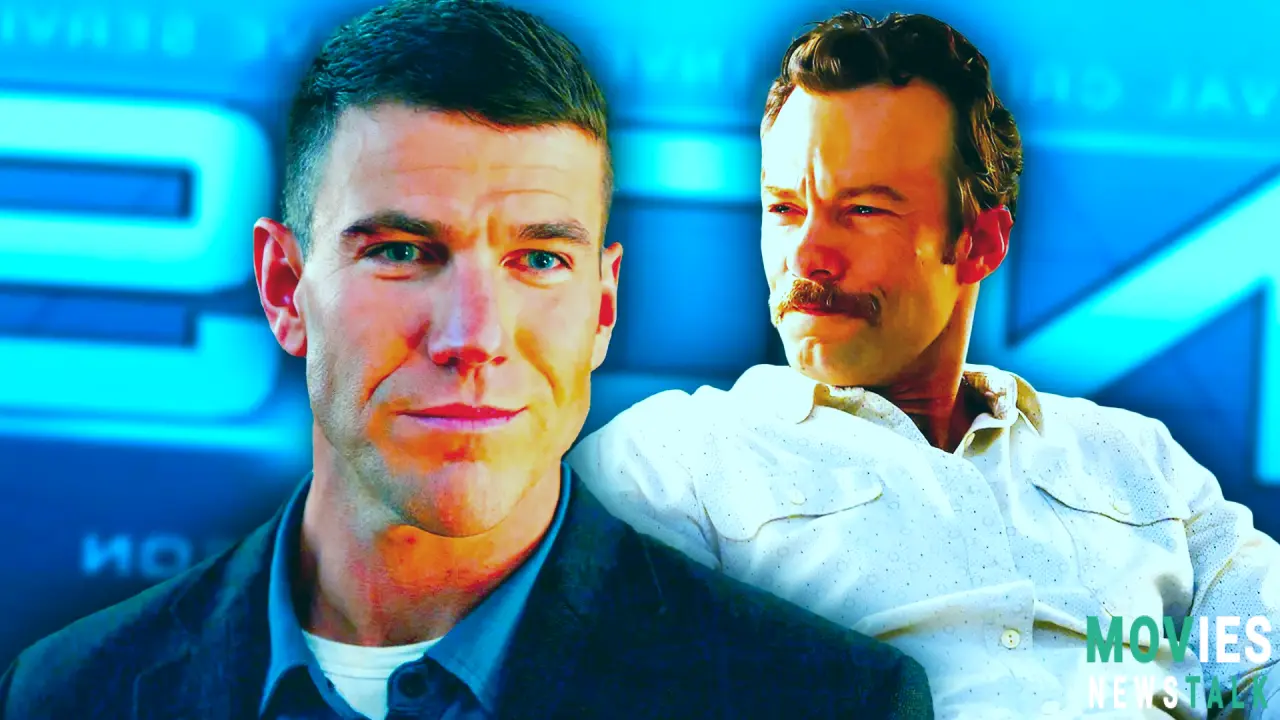NCIS: Origins – Why Gibbs and Franks Work for NIS, Not NCIS!
NCIS: Origins: A Prequel's Puzzling Acronym
NCIS: Origins, that prequel series focusing on a young Leroy Jethro Gibbs ( Austin Stowell ) and Mike Franks (Kyle Schmid) in 1991, has a seriously confusing detail: Gibbs works for NIS (Naval Investigative Service), not NCIS (Naval Criminal Investigative Service) — the agency Mark Harmon's Gibbs is famous for. This detail immediately shows some serious differences that would surprise any new viewers!
This seemingly minor detail reveals how much NCIS evolved. Origins uses pre-computer technology; showing us how different things were! Supporting characters like Special Agent Lala Dominguez (Mariel Molino) and Vera Stickland (Diany Rodriguez) use clunky tools, emphasizing the distance between Origins' team and the more modernized Gibbs-led Major Case Response Team (MCRT). But the main difference lies in those crucial acronyms! And as we'll see, this all perfectly showcases an actual shift that happened within this government agency!
NCIS's Name Game: From NIS to NCIS – A Real-World History!
NCIS actually went through name changes. The agency’s real-world history involves several reorganizations from NIS and the changes shown perfectly impact that plot shown on-screen: Gibbs joined during this transitional time; thus reflecting how he initially made that crucial shift between an earlier more-military influenced version, towards that eventual shift into a much more civilian approach in his later, current-era work! It shows those differences, creating narrative coherence without dwelling heavily on complicated historical details which would’ve made understanding some plot decisions very challenging.
In reality, the transition involved more than one step. First, the NIS (established after World War II by ONI, Office of Naval Intelligence) changed to NSIC (Naval Security and Investigative Command) in 1985, then to NISC (Naval Investigative Service Command) in 1988. Even those labels confused people, sometimes referring to NIS for the overall agency, using “Command” to specifically mean its headquarters! In 1991-1992, after the Tailhook scandal , the whole thing became NCIS— the current organization Harmon's Gibbs works for. And just to add insult to injury, sometimes other variations occurred. However, NCIS's simplification showcases why their simplified presentation makes for a clearer storyline.
The Tailhook Scandal: A Real-World Event Shaping NCIS Lore
The Tailhook scandal (1991)—a series of sexual assaults by U.S. Navy and Marine Corps officers at a Las Vegas convention— greatly impacted NCIS’s organization. That real-world event dramatically shifted that agency's leadership; that event profoundly affected the direction that NCIS itself would take after that event; creating important historical impacts. The fact that Origins begins near this real-world incident means it showcases that incredibly significant transitional moment between that largely military era towards what is eventually recognized in current-day NCIS as the largely civilian organization now.
NCIS: Origins' Time Frame: A Clever Narrative Device!
NCIS: Origins wisely sets the story between these periods. The timeline's perfect because that very important name change happened near that same time! Showing Gibbs’s entry during those crucial moments perfectly mirrors the actual, real-world events in NCIS development! And that’s excellent storytelling!
Those changes and details surrounding the real-world context for these shows are truly valuable, particularly as it mirrors real-world events that involve shifts in tone regarding internal organization and shifts in operational approach and priorities.
Conclusion: A Name Change Reveals a Deeper Truth!
The difference in agency names isn’t simply a technicality. NCIS: Origins smartly utilizes NIS as a detail to show Gibbs’ early days and emphasize the immense and deep-seated changes undergone in NCIS’s entire history! The entire premise utilizes this simple acronym swap to demonstrate a large narrative transition without sacrificing accessibility and narrative pacing! The choices of highlighting those particular changes shows immense narrative and strategic decision-making by the creative production team. Using real-world events provides both deeper immersion for audiences with deeper knowledge regarding this specific military-related branch while creating engaging narrative hooks that could both fascinate the casual viewers while pleasing die-hard fans alike. Using clever narrative details to impact and further engage viewers is just what should be emphasized here!

